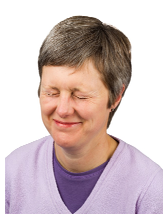Contents |
Introduction
Blepharospasm is a disorder of the nerves that control the eyelid, which may appear to others that the sufferer is deliberately closing their eyes tightly. Also called eyelid blepharospasm and benign essential blepharospasm, this condition manifests as an uncontrollable, forceful closure of the eyelids. Usually it affects both eyes at once, although in some cases only one eye is impaired.
Blepharospasm can sometimes begin with episodes of eyelid twitching, called myokymia, which is usually caused by stress, fatigue, too much caffeine or generally high levels of stress. Myokymia is usually not medically significant, but occasionally it can begin in younger patients and progress with age into the more severe blepharospasm.
This condition is a chronic, bilateral (affecting both eyes) and variably progressive dysfunction of the nerve that controls the oculomotor muscle surrounding the eye. In some cases there may be twitching or muscle spasms in other areas of the face, especially the cheeks and brow.
Cause
The cause of blepharospasm is unknown, although studies indicate that it may be a facial nerve disorder involving the basal ganglia are of the brain. It is known that people in their 50s and 60s or most susceptible, and that women are three times more likely to experience it than men. Estimates of the number of affected individuals in North America range up to about 150,000, making it relatively uncommon.
Symptoms
Early symptoms of this condition include occasional involuntary winking, blinking or squinting of one or both eyes and increasing difficulty in keeping the eyes open. Extreme light sensitivity may also be present, especially as the condition progresses. The eyelid spasms increase in frequency and severity until they are unremitting, which leaves both eyes clamped shut and the eyebrows pulled downwards.
Symptoms are made worse by stress, fatigue, bright lights, watching TV or using a computer, driving and social situations. Severe cases may cause the lids to be clamped shut for longer than a typical blink, causing erratic interruption of the vision.
Treatment
There is no known cure for blepharospasm, but there are some treatments that help reduce the severity of its symptoms. Medications are largely ineffective, but the injection of Botox into the eyelid muscles can help tremendously; it is important, however that Botox be used only by very experienced practitioners, as unwanted complications can include paralysis of other facial muscles, which can lead to drooping lids, drooping corner of the mouth accompanied by drooling, or excessive tear production. Fortunately, these events are usually only temporary. Botox injections need to be repeated every few months.
In some cases, a surgical procedure can remove some of the muscle fiber connections and/or the nerves that control them and cause the eyes to squeeze shut.
Other treatments are under study for this condition, including biofeedback, acupuncture, hypnosis, chiropractic therapy and nutritional approaches. It is not yet known how effective these may be, although the results seem promising for some.
Wraparound sunglasses are helpful in reducing the intensity of light which is one of the triggers of blepharospasm; they can also serve the purpose of hiding the eyelid spasms for those who are bothered by the appearance of the condition.
Intense lighting and overall stress are two known triggers for blepharospasm, as well as fatigue from either inadequate sleep or visual stress caused by computer use or watching TV. It is thought that some social situations can also trigger episodes, probably by causing anxiety.
Blepharospasm can be disruptive to the vision and should not be ignored. The first line of treatment should include stress reduction and making sure to get enough sleep. Anxiety reduction by the use of relaxation techniques or hypnosis is also helpful.
Often, the precursor to blepharospasm is myokymia, small lid twitches that are not serious in themselves; however, avoiding myokymia triggers like too much caffeine and overuse of alcohol may be helpful. Interrupting the initial episodes of lid twitching may be helpful in preventing progression to blepharospasm.
If you believe you may be having episodes of myokymia or blepharospasm, consult your eyecare professional, especially if episodes are becoming more frequent or more severe.






